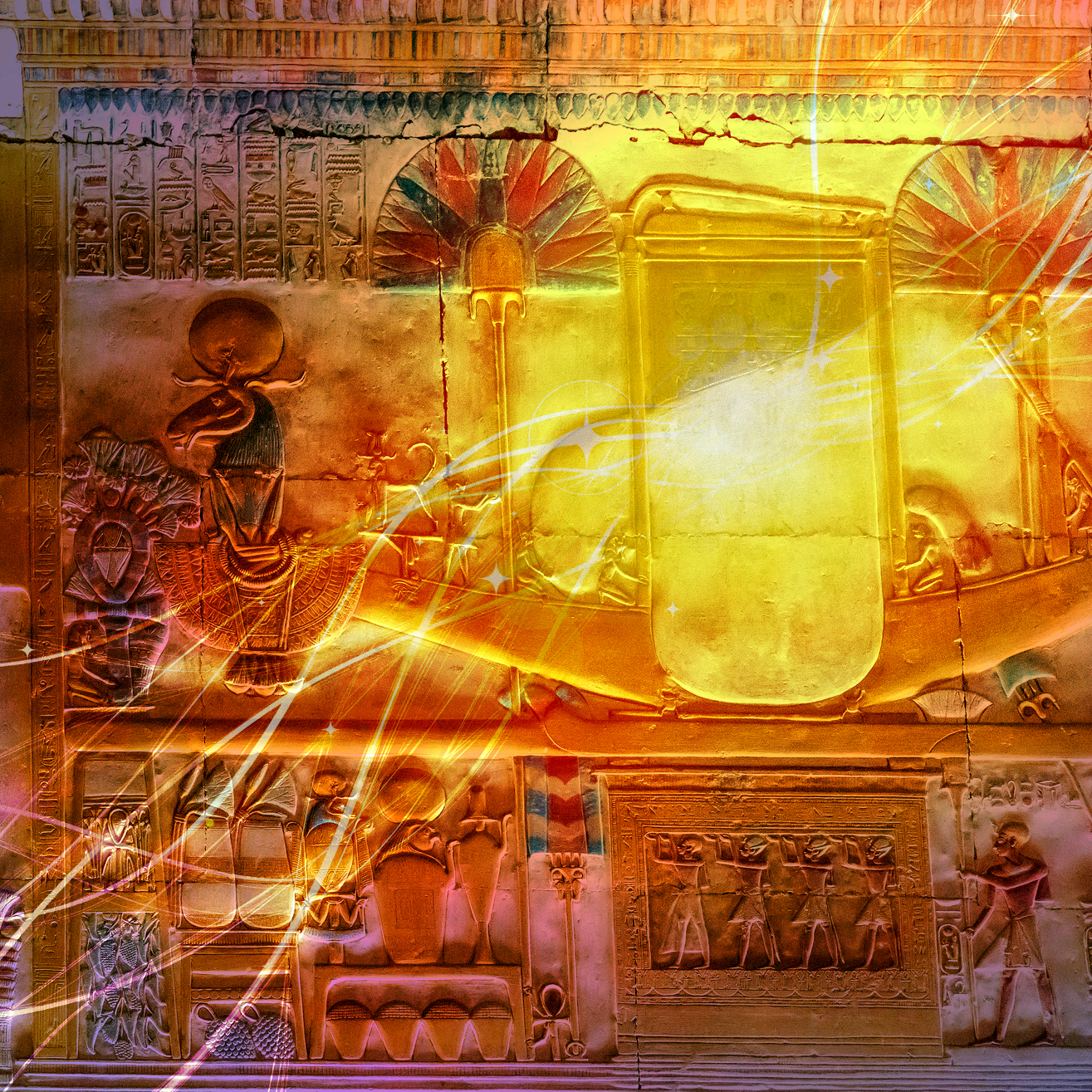Taken from: http://kabane52.tumblr.com/post/132812715270/amunism-and-atenism
Akhenhaten is widely known as the “monotheistic Pharaoh” and his cult of the Aten has absurdly been described as the “first monotheism.” This ignores the abundant evidence that monotheism is the earliest religion of the human race, as was documented in detail by Wilhelm Schmidt in his twelve volume work on the subject, popularly summarized lately by Winfried Corduan. My intent, however, is not to complain about that. Instead, it is to present a revised view of what Atenism was on a revised chronology, largely drawing on the fascinating work of traditional Catholic scholar Damien Mackey.
I have pointed out in the past that the descriptions of Amun in Egyptian literature converge in fascinating ways with the biblical description of God. Amun-Re is a sun-god. The sun, of course, is one of the Lord’s chief symbols in Scripture, and the nations worshiped God as the “God of Heaven.” This is why the phenomenon of original monotheism is called the “sky-god” phenomenon. That a god was associated with the sun does not mean that he had always been identified with the sun. Indeed, I think the “fusion” of Amun and Re was the recovery of a pristine monotheistic religion. Just as Yahweh and El were two titles for one God, so also Amun and Re. Imhotep, whom I have identified with Joseph, served as High Priest of Re at Heliopolis.
On a revised chronology, the New Kingdom of Egypt is born out of the alliance of Saul and Ahmose (biblical Ahimaaz, Saul’s father-in-law) who coordinated to expel the Hyksos (biblical Amalekites) from Egypt. Ahmose drove them north, and Saul defeated them in 1 Samuel 15. During the 18th Dynasty, the religion of Egypt is centralized on the person of Amun-Re and has been described by historians as “virtually monotheistic.” Later in the New Kingdom, Amun acquires a consort (just as Yahweh would acquire a consort among many Israelites), but this does not mean that this is an integral part of the cult. Some features of Egyptian religion remain enigmatic. Mut receives worship in the 18th Dynasty, but my suspicion is that this is the embodiment of Lady Wisdom, as described by King Solomon himself in Proverbs. In Egyptian, Hatshepshut’s chief advisor Senenmut oversees the construction of the great Karnak Temple to Amun. On a revised chronology, Hatshepshut is contemporary with King Solomon. Her throne name “Makeda” is almost identical with the traditional name for the queen of Sheba, “Makera.” Josephus describes the queen of Sheba as the “queen of Egypt and Ethiopia.” And the name of her chief advisor “Senenmut” is etymologically quite close to “Shelemoth”, one form of King Solomon’s name. Much of Solomon’s life is unreported in the Scriptures. It is possible, even probable, that Solomon spent time in Egypt to oversee a Noahic temple to the one God, an Egyptian sanctuary to parallel the Jerusalem Temple. Senenmut means “devotee of Mut”, whom I have identified with Lady Wisdom. Solomon is thus called by an Egyptianized form of his name meaning “devotee of wisdom.”
If Amun is the one God as I have suggested, then Akhenhaten’s attempt to erase the worship of Amun from Egypt and replace it with the “alternative monotheism” of Atenism must be seen as pernicious. Let us ask ourselves, then: on a revised chronology, what was occurring in Israel at this time?
In fact, around the same time that Akhenhaten was overseeing his religious revolution, Ahab was overseeing a religious revolution in the Northern Kingdom, replacing the worship of Yahweh with the worship of Baal: all this inspired by his devotion to his Sidonian wife Jezebel.
Similarly, in Egypt, Akhenhaten’s religious revolution is inspired by his devotion to his wife Nefertiti.
Scholars have commented on the remarkable similarity between the famous “Jezebel seal” discovered in Palestine and the symbolism of the “14th century” Queen Nefertiti. Could it perhaps be that after Ahab dies, Jezebel marries Akhenhaten and attempts to do the same thing there? Or perhaps it was a sister of Jezebel. Whatever the truth is, the chronological convergence between our two religious revolutions is remarkable.
In the Northern Kingdom of Israel, Jehu vigorously wipes out the Baalist revolution. On a revised chronology, what do we find? We find that the great reforming pharaoh Horemheb is doing the same to Atenism in Egypt. We also find that:
1. The length of the reigns of Jehu and Horemheb is identical. On a revised chronology, they arguably begin and end their reigns in identical years.
2. Horemheb is of unknown lineage. He was certainly not Egyptian royalty.
3. Horemheb does not put a son on the Egyptian throne. Instead, he appoints his vizier, Rameses I, as Pharaoh, thus beginning the 19th Dynasty of Egypt.
All of this suggests that it is possible or probable that Jehu actually is Horemheb, king of Egypt, who took the same measures in Egypt that he took in Israel to wipe out the Atenist/Baalist cult of Ahab and Akhenhaten.
These are all suggested as fascinating possibilities. More research is necessarily to definitively confirm or refute them. What I want to show, however, is how a revisionist chronology does more than vindicate the biblical history. It likewise vindicates the biblical theology of history, where Israel is the heart of the human race, and Israel’s sacred history sends out shockwaves through the history of all mankind. When God remolds Israel, He remolds the world.

No comments:
Post a Comment